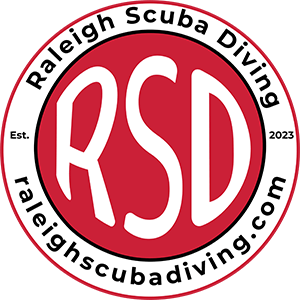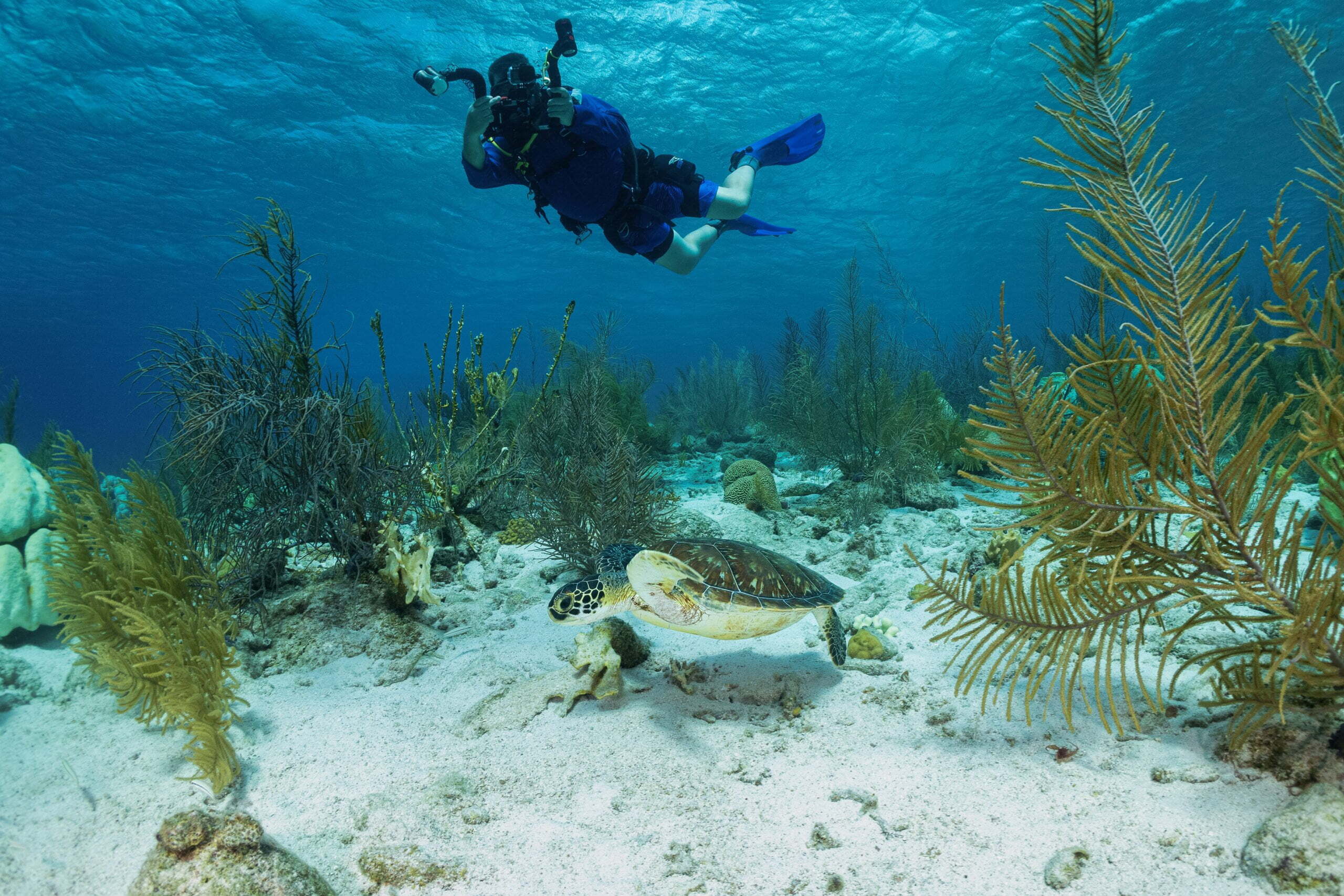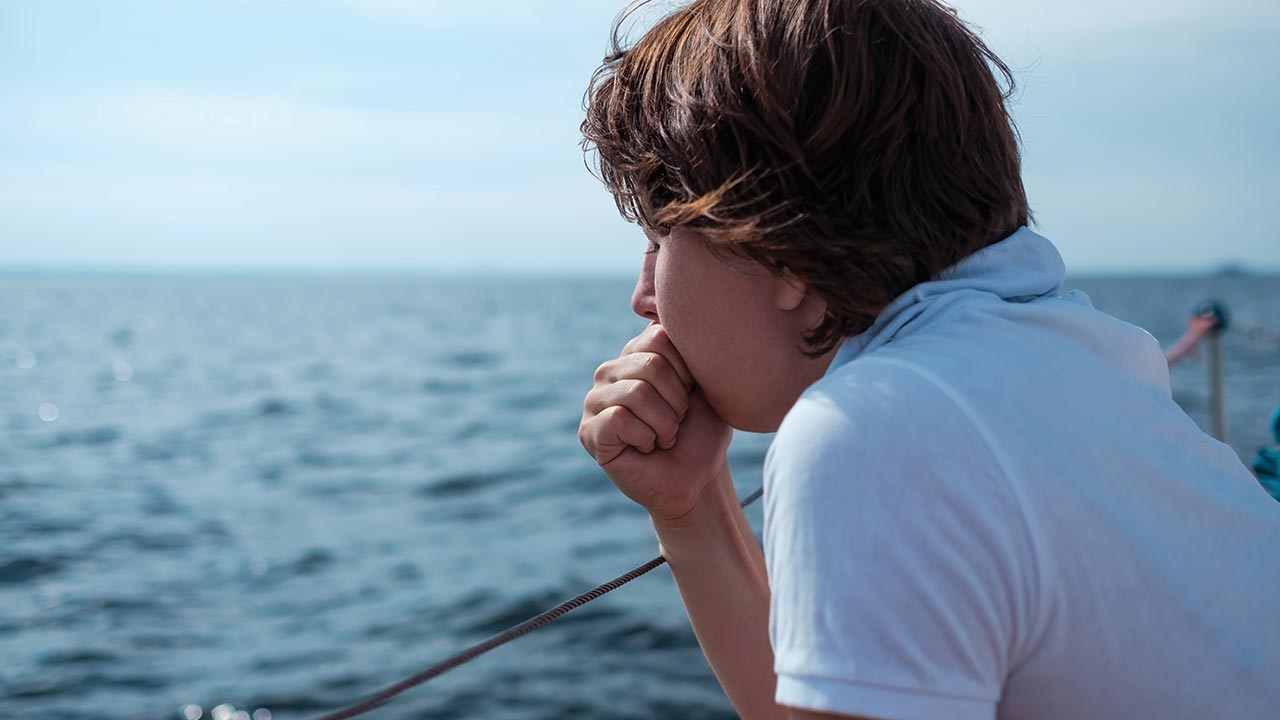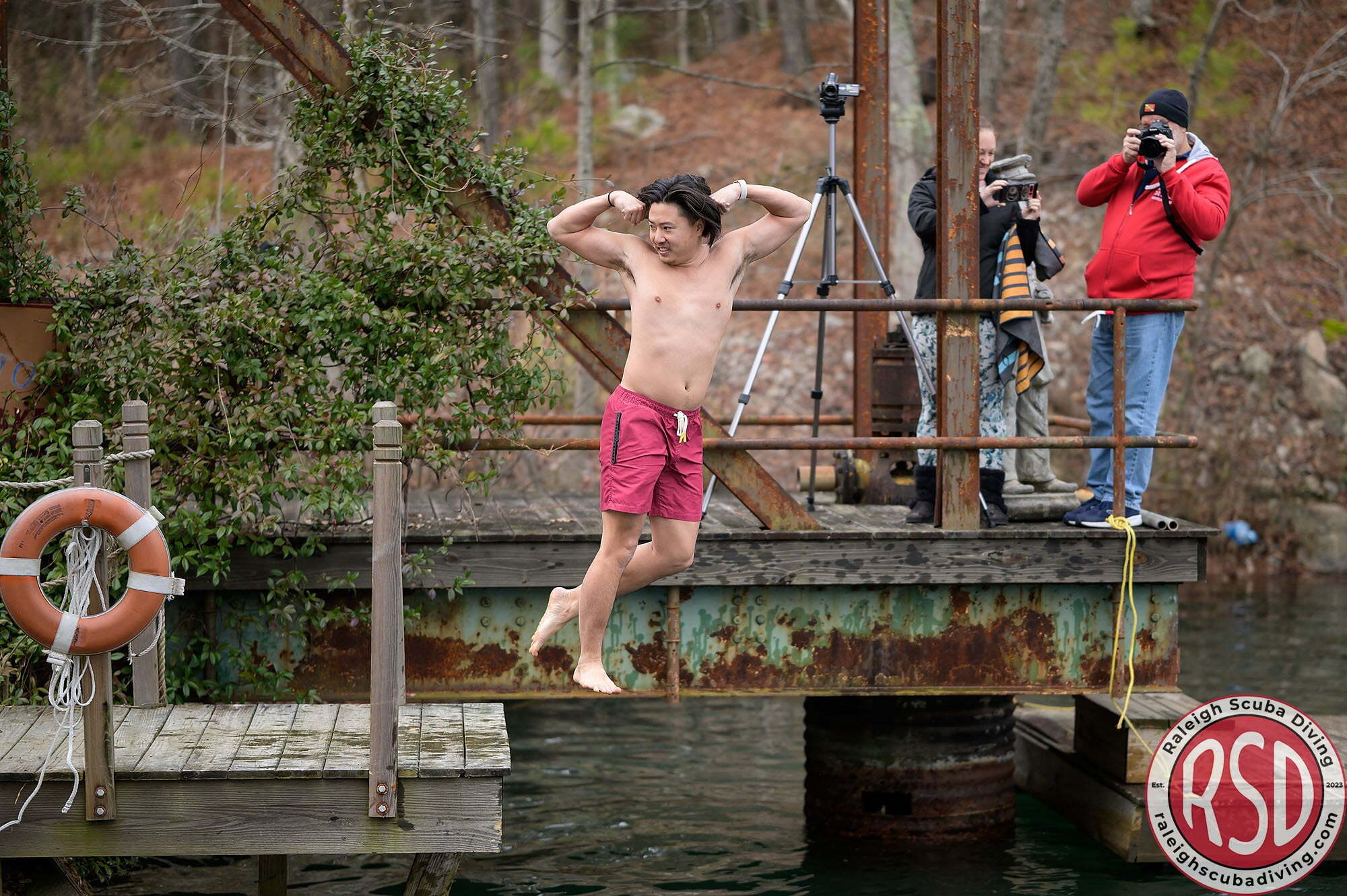 When new divers buy their first set of gear, one of the most overlooked items is their DIVE LIGHT! While it may not seem very important at first, a quality dive light can turn a good dive into a GREAT dive. It may even save your life.
When new divers buy their first set of gear, one of the most overlooked items is their DIVE LIGHT! While it may not seem very important at first, a quality dive light can turn a good dive into a GREAT dive. It may even save your life.
Why is Light so Important Underwater?
One of the peculiar characteristics of water is that it absorbs light; a LOT of light. Even at a shallower depth of 10m (33ft), water has already absorbed over 50% of the light you would have seen on the surface, making it less intense at depth. Since there is less light, you see less color as well. This happens because when we observe colors, what we are actually seeing is different wavelengths of light being reflected off the environment around us. When deep water absorbs most of that light, there is nothing left for the environment to reflect so…no more light, no more wavelengths, no more colors. This phenomenon of light losing its intensity from being absorbed is called light attenuation (fun fact that makes you sound smart to your friends!). But what does this cool science mean for divers?
It means that diving impairs your vision when you are at depth.
That’s right. Even at shallow depths, everything can appear darker and duller. It is one more reason to remember that diving at any depth is dangerous and that SAFETY should always come first.
Why Do Divers Have Dive Lights?
- Dive lights have many uses both at the surface and underwater:
- Bright light makes it easier to see underwater and helps restore original colors.
- During night dives, a dive light is a must and having a backup light is often required.
- Bright/flashing lights make divers easier to spot on the surface.
- Light is a common way to signal and communicate with your buddy underwater, especially when cave diving or exploring wrecks!
- Having a dive light lets you search in nooks and crannies for aquatic wildlife or buried treasure (arrr matey)..
So What is the Best Dive Light for a New Diver?
Every diver is different, and each has their own goals, so there is no one dive light that fits all. However, there are some important features that should be considered when buying your first dive light:
How Many Lumens Does it Have?
- Lumens measure how much visible light is emitted from a bulb. The greater the lumens, the brighter the bulb is.
- A typical 60W incandescent light bulb in a lamp will emit around 800 lumens; enough to provide ambient light in a hallway or bathroom.
- An entry level dive light will usually have anywhere between 500-1000 lumens. Lights that are closer to 500 lumens are good for diving during the day and searching coral reefs for wildlife. They can also be used as a backup (NOT a primary) light during night dives.
- Lights that are closer to 1000 lumens are good options for recreational night diving and exploring small, shallow wrecks since they provide a very bright light. They will also illuminate large holes in case an octopus or eel is hiding!
Wide Beam or Narrow Beam?
- Wide beam (sometimes called flood lights) lights illuminate large areas with a steady, even beam. However, they do not penetrate very far through the water and only light up the space that is close to you. They are great for providing ambient light in the area you are exploring and are often used for videos and photos.
- Narrow beam (often referred to as spotlights) lights illuminate smaller areas with a concentrated, small beam that is brightest at its center. They tend to penetrate a much greater distance through the water, allowing you to see small areas that are farther ahead. Having a narrow beam is very useful when searching for smaller things underwater. It is also easy for others to see your light, making it ideal for signaling and communicating with your buddy.
It is important to understand that no matter how bright or narrow a dive light is, it will not magically shine through high turbidity. Turbidity measures how cloudy (murky) water is and is caused by particles of dirt, algae, plant/animal debris, and anything else floating around in the water. With a lot of turbidity present, light is only going to illuminate all the muck around you. Using a wide beam light will severely limit your visibility, much like using a car’s high beams in fog. Using a narrow beam light will help you see a short distance ahead of you, even if it is just more dirt and grime.
Battery Life
How long the dive light battery lasts is also called “Burn Time,” and should be carefully considered. A dive light is an important piece of safety equipment that helps divers communicate with each other, keeps divers from getting lost, and can help stranded divers alert boats on the surface. Batteries should be fully charged before diving. Having spare batteries will allow you to swap them out between dives, giving you a fresh light each dive.
A good rule for determining the minimum battery life you will need is to make sure the dive light will last at least twice as long as your dive. If your dive is going to be 1 hour, then your dive light should last at least 2 hours. This gives you extra burn time in case you or your buddy have an emergency. You can never have too much battery life!
Adjustable Brightness and Strobes
Some dive lights give you the option to adjust the brightness and beam angle. They often allow you to use the switch button to alternate between a high, medium, and low brightness. Others might allow you to adjust the beam angle to be wider or narrower when you twist the head of the light. These features give you more control over the light and offer increased flexibility.
Dive lights often have a strobe feature that is usually activated using the main switch (Read your instruction manual to see how the strobe function is activated). The strobe makes the light continuously flash making it stand out from any other light sources inteh water. The strobe is useful when trying to get someone’s attention, be it your buddy or a boat on the surface or trying to find your way back underwater to a specific point.
On/Off Switch
New divers do not usually think about the location of the dive lights on/off (main) switch, but it really can make a difference in comfort. Most dive lights locate their switch toward the head of the light or on the back of the handle.
Some divers prefer the switch to be towards the head because they hold their light with their thumb facing up and their fingers down. This makes the switch quick and easy to reach with their thumb. Others prefer the switch to be located on the back of the handle because they hold their light with their fingers facing up and their thumb resting on the back of the handle. Again, this makes the switch quick and easy to reach with their thumb.
Some dive lights come with a glove or wrap you can wear with the light attached to it. Be sure you can easily operate the switch when using such a mounted dive light.
There are times when divers need to wear thick gloves, which can limit their ability to use the tips their fingers. Be sure you can easily operate the switch while wearing gloves prior to diving.
Depth Rating
Be sure that the dive light will work at the same depth as your dive! If you are diving to 60ft, you don’t want to bring a light that is only rated to work at a max depth of 25ft. Flooding a light underwater will quickly cause it to cease working – usually permanently.
You Get What You Pay For
You do NOT have to spend $1000’s of dollars on a heavy, high-end canister torch that could light up the Mariana Trench (which is a really deep, dark location). It is not only unnecessary, but is also not recommended for new divers because it can be easy to lose or damage lights while you are busy mastering your buoyancy, trim, and gear placement on your BCD or, at best, blind your fellow divers.
On the other hand, that $20 flashlight off Amazon is probably going to flood the moment you get it in the water. A dive light is an important part of your dive kit and going as cheap as possible is a good way to have a dead light the moment you need it most.
Conclusion
Having a quality, reliable dive light which is appropriate for the environment you are diving in is essential for a fun and safe dive. As a new diver, you don’t need the biggest, brightest, or most expensive light on the market. You also don’t want to buy a junk light that will die before your dive even starts. Your first dive light should be bright enough to light your way, last longer than your dive, and be comfortable to use. As you gain more experience, you can try different lights and see which kinds meet your future diving goals.
Let’s Go Diving!
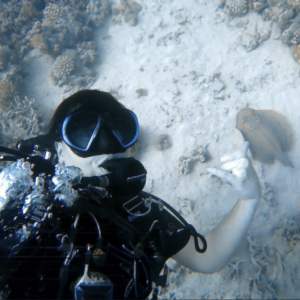
Uriah Rex | Divemaster Candidate
Salt water is my spirit of choice
